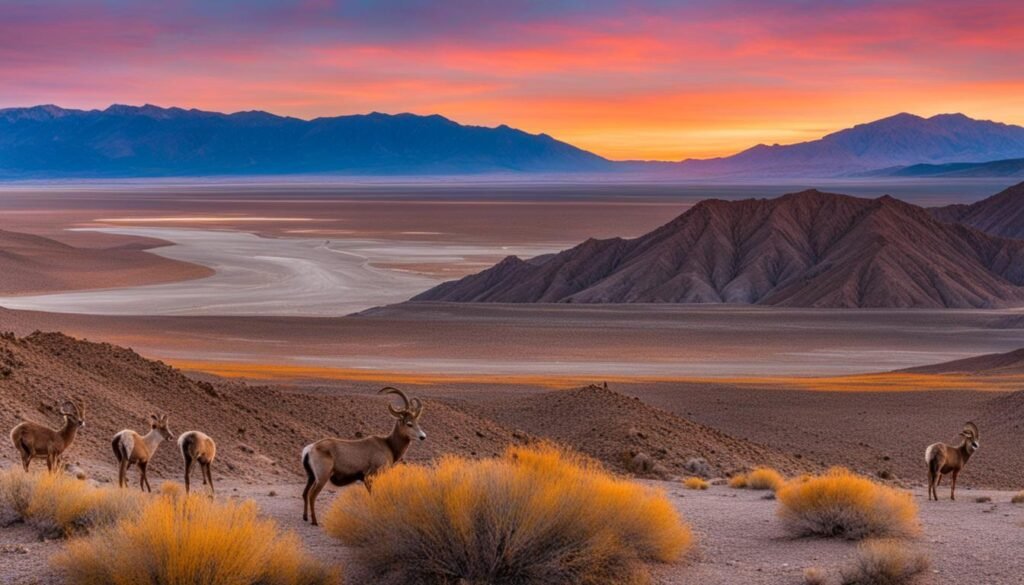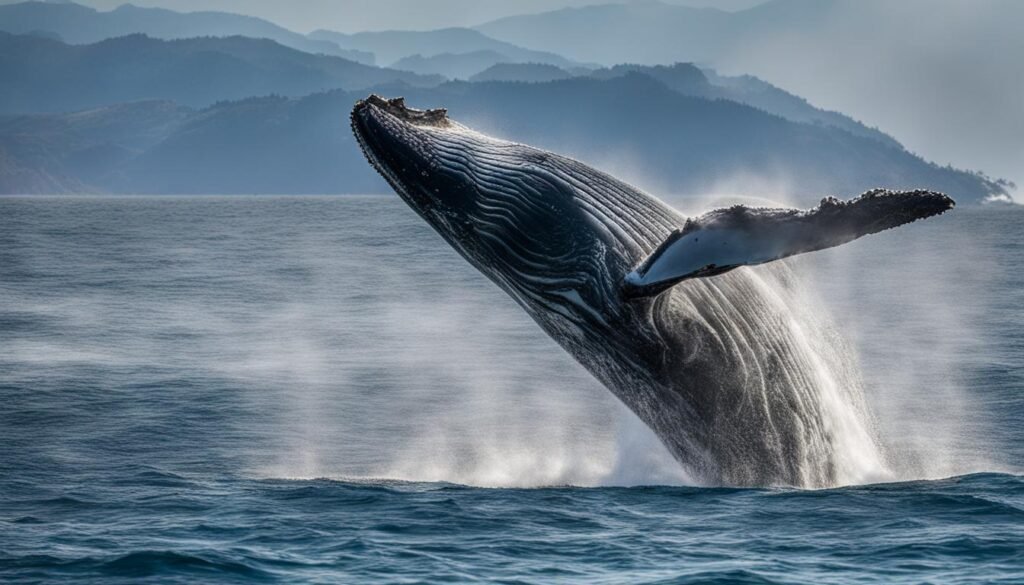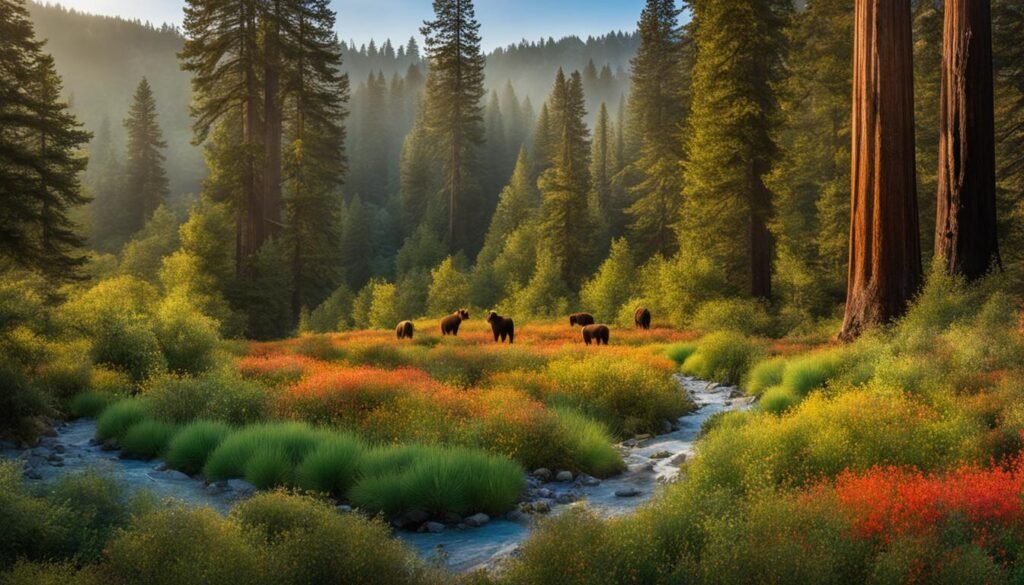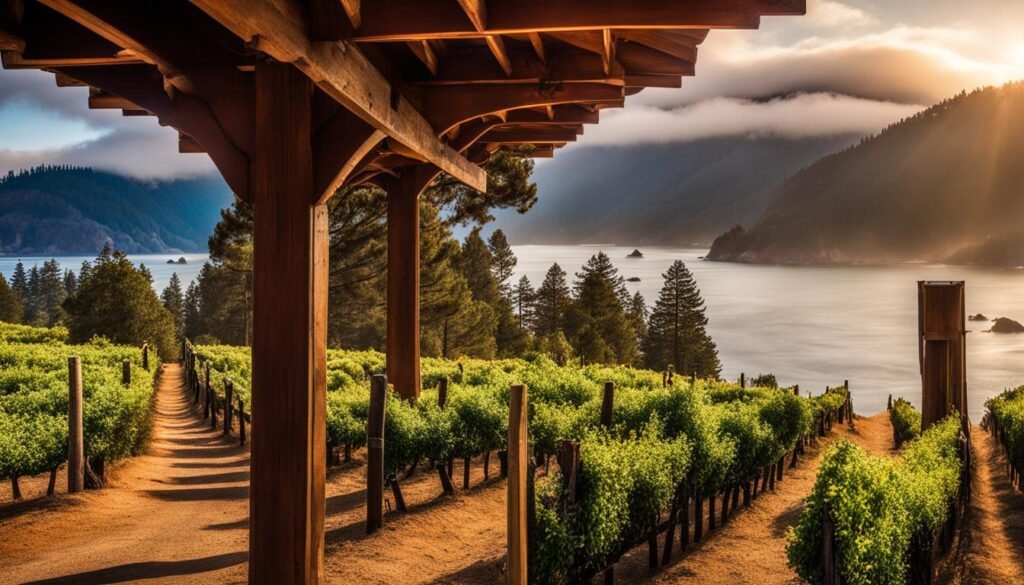Greetings, nature enthusiasts! Join me on an exciting journey as we delve into the captivating world of California wildlife. From the sprawling landscapes to the diverse range of species, the Golden State holds a treasure trove of natural wonders waiting to be discovered.
California is renowned for its rich biodiversity and vibrant ecosystems. Whether you’re a fan of furry creatures, feathered friends, or fascinating marine life, this state has it all. From the iconic redwoods to the stunning coastline, each region offers a unique habitat for an incredible array of animals and plants.
Are you ready for an adventure? Let’s dive into the heart of California’s wildlife and explore the wonders that await us. Join me as we uncover the hidden gems of Yosemite Valley, witness the desert oasis in Death Valley, stargaze in Anza-Borrego Desert State Park, admire the coastal wonders from Mendocino to Catalina Island, and marvel at the fiery spectacle of Lassen Volcanic National Park.
Key Takeaways:
- California is home to diverse wildlife species, from majestic bears to elusive desert creatures.
- The state boasts a variety of habitats, including forests, deserts, mountains, and coastlines.
- Several national parks and wildlife centers work tirelessly to preserve and protect California’s remarkable wildlife.
- From wildlife tours to wildlife parks, there are ample opportunities to experience California’s natural beauty.
- By supporting wildlife organizations and practicing responsible wildlife watching, we can contribute to the conservation of California’s precious ecosystems.
Yosemite Valley: A Showcase of California’s Wildlife
When it comes to exploring California’s wildlife, Yosemite Valley is an absolute gem. This picturesque valley is nestled within Yosemite National Park, a breathtaking wilderness known for its towering granite cliffs, lush meadows, and pristine waterfalls. As you venture into Yosemite Valley, you’ll be greeted by some of the state’s most iconic landmarks, including the awe-inspiring Yosemite Falls, which holds the title as the tallest waterfall in North America. The majestic El Capitan, a massive granite monolith, also commands attention as the largest single piece of granite on Earth. These natural wonders create an enchanting backdrop for the diverse wildlife that inhabits the area.
Yosemite Valley is not just a feast for the eyes; it is also a haven for wildlife enthusiasts. With its varied ecosystems, this remarkable valley is a sanctuary for a wide range of species. Keep an eye out for magnificent black bears and graceful mule deer as they roam freely through the valleys and meadows. You might even spot various bird species fluttering overhead, adding a touch of vibrant color to the landscape.
To ensure the preservation of the wildlife within Yosemite Valley, organizations like the California Wildlife Center Malibu collaborate with other conservation groups to protect and sustain the delicate balance of this natural wonder. Their dedicated efforts, combined with those of the California Wildlife Preserve and other conservation initiatives, play a crucial role in safeguarding the wildlife habitats within Yosemite National Park.
Yosemite Valley truly exemplifies the wonders of California’s wildlife. From the towering cliffs to the diverse fauna, this region showcases the state’s commitment to preserving its natural heritage. Whether you’re an avid wildlife enthusiast or simply appreciate the beauty of nature, a visit to Yosemite Valley is sure to leave a lasting impression.
Death Valley: A Desert Oasis for Wildlife
Despite its harsh conditions, Death Valley National Park serves as a refuge for a surprising array of wildlife. This vast desert landscape, known for its extreme temperatures and arid environment, harbors a hidden ecosystem teeming with diverse species.
One of the highlights of Death Valley is Zabriskie Point, a unique geological formation that offers breathtaking views of the surrounding badlands. Here, amidst the rugged terrain, visitors can catch glimpses of elusive kit foxes darting through the golden sand dunes.
Another natural wonder in Death Valley is the mesmerizing Racetrack Playa, where rocks mysteriously glide across the dry lakebed, leaving tracks behind. Despite the inhospitable conditions, this phenomenon attracts researchers and wildlife enthusiasts alike.
Among the native inhabitants of Death Valley are bighorn sheep, renowned for their ability to navigate the steep cliffs and rocky terrain. These majestic creatures symbolize the resilience of life in this harsh environment.
Unfortunately, some species in Death Valley are endangered, such as the pupfish. Organizations like the Malibu Wildlife Rescue and California Wildlife Rehabilitation Center play a crucial role in rescuing and rehabilitating these vulnerable creatures, ensuring their survival for future generations.


Death Valley: A Fragile Ecosystem Worth Protecting
The delicate balance of life in Death Valley makes it essential to preserve and protect this unique desert oasis. Responsible visitor practices, such as staying on designated trails and respecting wildlife habitats, are crucial in maintaining the integrity of this fragile ecosystem.
By raising awareness and supporting organizations dedicated to the conservation of endangered California wildlife, we can ensure that Death Valley remains a sanctuary for these remarkable creatures to thrive.
Anza-Borrego Desert State Park: A Stargazer’s Paradise
Situated in the heart of California, Anza-Borrego Desert State Park is a mesmerizing destination that offers visitors a unique opportunity to explore the wonders of the night sky. With its breathtaking landscapes and pitch-black night skies, this desert oasis is a haven for stargazers and astronomers alike.
At Anza-Borrego Desert State Park, you can marvel at the vastness of the universe as you gaze up at a canopy of stars. Away from the bright lights of the city, the park’s remote location in Borrego Springs provides the ideal conditions for studying and observing celestial wonders.
The park boasts a rich biodiversity, with a wide variety of flora and fauna that have adapted to survive in this arid environment. Among the iconic wildlife species found here is the desert bighorn sheep, a symbol of resilience in the harsh desert landscape.
To protect the unique biodiversity of Anza-Borrego Desert State Park, numerous California wildlife organizations are actively involved in its conservation. Through their efforts, these organizations ensure that the park’s delicate ecosystems and wildlife thrive for future generations to enjoy.
Astronomy at Anza-Borrego Desert State Park
With its expansive night skies, Anza-Borrego Desert State Park offers unparalleled opportunities for astronomical observation and photography. Whether you’re a seasoned astronomer or a curious amateur, you can witness the magic of the universe unfold before your eyes.
The park’s stargazing programs and events provide educational opportunities for visitors of all ages, allowing them to learn about the wonders of the cosmos and deepen their appreciation for the night sky. From guided telescope observations to informative presentations, these programs offer a unique window into the captivating world of astronomy.
Preserving California’s Wildlife
Anza-Borrego Desert State Park is just one of the many natural reserves in California that showcase the state’s rich biodiversity. To ensure the preservation of this precious wildlife, several California wildlife organizations work tirelessly to protect and conserve the unique ecosystems found within the park.
These organizations collaborate with local communities, researchers, and government agencies to develop conservation strategies, raise awareness about California wildlife facts, and promote responsible tourism practices. Through their efforts, they contribute to the continued existence and sustainability of the park’s flora and fauna.
Experience the Magic
Visiting Anza-Borrego Desert State Park is an experience like no other. Whether you’re marveling at the vastness of the cosmos or exploring the diverse wildlife that calls this desert oasis home, the park offers a chance to connect with nature in a profound and meaningful way.
So pack your telescope, grab your camera, and embark on a journey to Anza-Borrego Desert State Park. Immerse yourself in the awe-inspiring beauty of the night sky, encounter fascinating wildlife, and discover the wonders of this stargazer’s paradise.
Coastal Wonders: From Mendocino to Catalina Island
California’s vast coastline is a paradise for wildlife enthusiasts, offering abundant opportunities to observe marine life and shorebirds in their natural habitats. From the mesmerizing geological formations of Bowling Ball Beach in Mendocino County to the crystal-clear waters surrounding Catalina Island, the coastal wonders of California provide a captivating glimpse into the diverse marine ecosystems of the state.
Whether it’s spotting playful sea otters floating amidst kelp forests or witnessing the majestic presence of elephant seals sunbathing on sandy shores, the coastal regions of California are a haven for wildlife watching. Migratory birds also grace these coastal stretches during their annual journeys, delighting birdwatchers with their vibrant plumage and melodious calls.
To ensure the preservation and protection of these invaluable coastal ecosystems, California wildlife refuges have been established throughout the state. These refuges serve as protected areas for the conservation of various species, including sea otters, elephant seals, and migratory birds. By supporting these refuges and practicing responsible wildlife watching, we can contribute to the continued well-being of California’s precious wildlife.


Lassen Volcanic National Park: A Fiery Wonderland
Lassen Volcanic National Park is a captivating destination that showcases the dynamic nature of California’s wildlife. Nestled within this volcanic landscape are extraordinary features such as Bumpass Hell, where hydrothermal activity creates a mysterious and otherworldly experience. Visitors can witness nature’s power firsthand as they explore this fiery wonderland.
One of the park’s most awe-inspiring attractions is McArthur-Burney Falls, a majestic waterfall that cascades down from an ancient lava flow. Its thunderous roar echoes through the surrounding forest, enchanting all who behold it. The falls provide a breathtaking backdrop for wildlife enthusiasts, who can observe the diverse species that thrive in this unique environment.
Lassen Volcanic National Park is home to a wide array of wildlife, thanks to its varied terrain and abundant resources. Among its inhabitants are black bears, mule deer, and mountain lions, each playing a vital role in maintaining the park’s delicate ecosystem. The presence of these magnificent creatures adds to the allure and natural beauty of the park, offering visitors a chance to witness the harmonious balance of nature.
This extraordinary landscape has been designated as a wildlife refuge, ensuring the preservation and conservation of these fragile ecosystems. The park’s commitment to protecting its diverse wildlife highlights the importance of California wildlife conservation efforts. By safeguarding the habitats and promoting sustainable practices, we can ensure that future generations can experience the wonders of Lassen Volcanic National Park.
The Serenity of Lassen Volcanic National Park
Immerse yourself in the serene beauty of Lassen Volcanic National Park. From the tranquility of Reflection Lake to the vibrant wildflower meadows, the park offers countless opportunities to connect with nature. Whether you’re hiking along scenic trails or camping under the starry night sky, Lassen Volcanic National Park truly is a sanctuary where wildlife and humans coexist harmoniously.
- Experience the mesmerizing beauty of hydrothermal features like Bumpass Hell and the Sulphur Works.
- Marvel at the power and grandeur of McArthur-Burney Falls, an oasis in the volcanic landscape.
- Keep your eyes peeled for sightings of black bears, mule deer, and mountain lions as you explore the park’s diverse habitats.
- Participate in guided wildlife tours to learn more about the park’s unique flora and fauna.
- Support California wildlife conservation organizations to help preserve and protect the delicate ecosystems of Lassen Volcanic National Park.
Plan your visit to Lassen Volcanic National Park and discover a fiery wonderland teeming with life. The park’s commitment to wildlife conservation ensures that future generations can continue to marvel at the wonders of California’s natural heritage.
Conclusion
California’s wildlife is a testament to the state’s remarkable natural beauty and biodiversity. From the towering redwoods of the Central Coast to the rugged peaks of the Sierra Nevada Mountains, the Golden State offers endless opportunities for wildlife enthusiasts to explore and appreciate nature’s wonders.
By supporting wildlife organizations and practicing responsible wildlife watching, we can help protect and conserve California’s precious wildlife for generations to come. It is our collective responsibility to ensure that these magnificent creatures and their habitats are preserved for future generations to enjoy.
Whether it’s visiting the stunning Yosemite Valley, exploring the desert oasis of Death Valley, or marveling at the coastal wonders from Mendocino to Catalina Island, there are countless ways to experience and appreciate California’s diverse wildlife.
So let’s join hands and make a difference for the wildlife of California. Together, we can contribute to the preservation of this natural heritage and ensure that these amazing creatures continue to thrive in the land of golden opportunities.
FAQ
What kind of wildlife can I expect to see in California?
California is home to a diverse range of wildlife species, including black bears, mule deer, kit foxes, bighorn sheep, sea otters, elephant seals, migratory birds, and more.
Are there any wildlife centers or rescues in California?
Yes, there are several wildlife centers and rescues in California, such as the California Wildlife Center Malibu and the Malibu Wildlife Rescue, dedicated to rescuing and rehabilitating injured or orphaned wildlife.
How can I contribute to California wildlife conservation efforts?
You can support California wildlife conservation by volunteering at wildlife organizations, donating to conservation projects, practicing responsible wildlife watching, and spreading awareness about the importance of protecting wildlife habitats.
Can I go on wildlife tours in California?
Yes, there are wildlife tours available in California that allow you to explore different habitats and observe wildlife in their natural environment. These tours are a great way to learn about California’s diverse wildlife species.
Are there any endangered wildlife species in California?
Yes, California is home to several endangered wildlife species, including the California condor, southern sea otter, San Joaquin kit fox, California tiger salamander, and many more. Efforts are being made to protect and conserve these species.
What are some California wildlife organizations I can support?
There are numerous wildlife organizations in California that you can support, such as the California Wildlife Center, Malibu Wildlife Rehabilitation Center, and various wildlife refuges. These organizations work towards the preservation and conservation of California’s wildlife.
Where can I find more information about California wildlife?
You can find more information about California wildlife from state wildlife agencies, national parks websites, and wildlife organizations. They provide valuable resources and educational materials about California’s unique wildlife species and their habitats.









